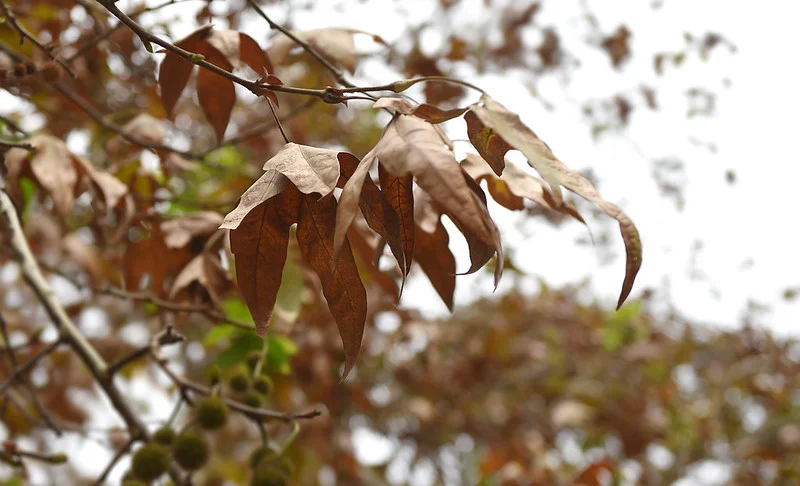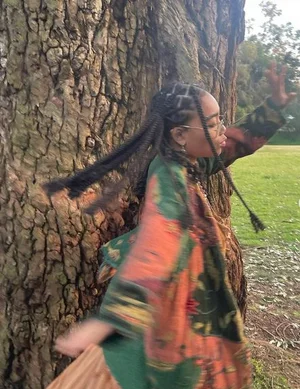
Be a Tree Hugger

Los Angeles County’s Chief Sustainability Office is hard at work on its Urban Forest Management Plan – a blueprint that will guide the planting, care, and protection of trees throughout the region. The CSO is kicking off a series of 25 public workshops so residents can help shape plans to better manage trees in their communities. Concurrently, the City of Los Angeles will be conducting 25 workshops in its various neighborhoods.
What is the Urban Forestry Management Plan?
The UFMP will help the County manage all the trees in our community – trees that are located where people live, recreate, and work -- not trees in open spaces or natural forests. The UFMP will help us protect, maintain, and increase the tree canopy in the County, maximizing the community benefits of trees and promoting biodiversity.
How did this initiative begin?
The UFMP has been a long time in the works. Stakeholders and County departments identified this action as a priority in the OurCounty sustainability plan. Our office was able to begin work on the UFMP thanks to a grant through the state CALFIRE Urban and Community Forestry grant program. We hope to provide a framework or template that cities in the region can look to as a resource for their own tree management practices as climate change worsens.
What are some of its most important goals?
A key goal for the UFMP is addressing inequities in the tree canopy. Though trees provide many benefits to our communities, including shading and cooling to combat extreme heat, not everyone in the County has equal access to trees. Data shows that low-income communities and communities of color often have less tree canopy than other places in the County. Low-income communities and communities of color lack access to the benefits of trees due to a history of disinvestment and discriminatory policies. Many of our marginalized communities also lack sufficient opportunity sites to plant the kinds of large-stature trees that provide the most benefits.
How can the public best help in the process?
Find a community workshop near you and attend. We will be hosting 25 unincorporated area workshops and 25 City of LA workshops all across the region, with both in-person and virtual options. To find a workshop near you, visit our workshop calendar page. And, anyone in the region is encouraged to take our survey to help us inform our UFMP, available here in multiple languages.
What changes might residents see at the neighborhood or regional level coming out of this plan?
When people hear about an Urban Forest Management Plan, planting more trees is often the first thing they think about. But managing our urban forest is about so much more than planting new trees. It is also about committing to using best practices for caring for and maintaining the trees we already have so they can reach their full potential, and it’s about putting protections in place to preserve our most valuable trees, such as very old and large trees or native tree species like oaks. And, the UFMP also includes recommendations around engaging County residents in all of these strategies.
What activities might residents see taking place in their community over the next decade?
You can expect to see the County begin implementation right away, with tree planting in street rights-of-way and tree planting and deferred tree maintenance in County parks, supported by our recent $8 million federal grant. We are developing programs and resources for residents to help support them in planting trees in their own yards, ideas for reimagining our streetscapes to make more room for trees and other amenities, new workforce development opportunities related to all phases of tree management, and collaborations and partnerships to maximize our regional impact.
What is the current state of the tree canopy in greater L.A.?
That depends on where you look, and how you look at it. The first thing to know about our urban tree canopy in L.A. County is that it’s not distributed equally. Some of that is because the County is huge, spanning many different climate zones and ecosystem types. It wouldn’t make sense to have the same goals for tree canopy coverage in a cool coastal area compared to a hot desert area, for example.
Additionally, we know that the L.A. area experiences hot and dry weather, and that’s only going to increase with climate change. Comparing tree canopy coverage in L.A. to coverage in different rainy climates – places like Seattle or Philadelphia – will never be an apples-to-apples comparison. It’s more helpful to compare L.A.’s tree canopy cover from place to place – is it equitable? And, to compare L.A.’s tree canopy cover over time – is the canopy cover increasing, decreasing, or holding steady? We know our canopy cover is not equitably distributed, and we know that in many places, our canopy cover is actually starting to decrease over time. So, when we think about those questions, we can see that we have a lot of work to do in the County.
Why is this City and County partnership unusual?
The County and City of Los Angeles have a long history of working together on shared priorities. What’s exciting about this partnership around our UFMPs is how we intentionally formalized our partnership right from the start, knowing that shared messaging and engagement around planning for our urban forests would enhance community understanding and reduce engagement fatigue among our stakeholders. And, this partnership will last beyond the planning phase, with continued coordination and collaboration extending into implementation.
Why are community workshops important?
Community workshops are one way for the County and City to hear from residents about their priorities and concerns related to trees in their neighborhoods. At the workshops, residents can learn more about the UFMP and share feedback on key topic areas, such as street and park trees. We will be listening carefully at our workshops and incorporating themes and trends that emerge from the workshops into our UFMP.
What is the rough timeline? When might we see work being done to expand our urban canopy?
The final UFMP will be released in Spring 2024, and we plan to hit the ground running. The County was just awarded an $8 million IRA grant to undertake “early action implementation” of the UFMP. The funds will allow us to get started right away, not only with tree planting and maintenance in parks and street rights-of-way but also with a workforce development program and engagement and education activities.
To learn more about the state of our urban forests, please read this blog post from CSO policy analyst Rebecca Ferdman.